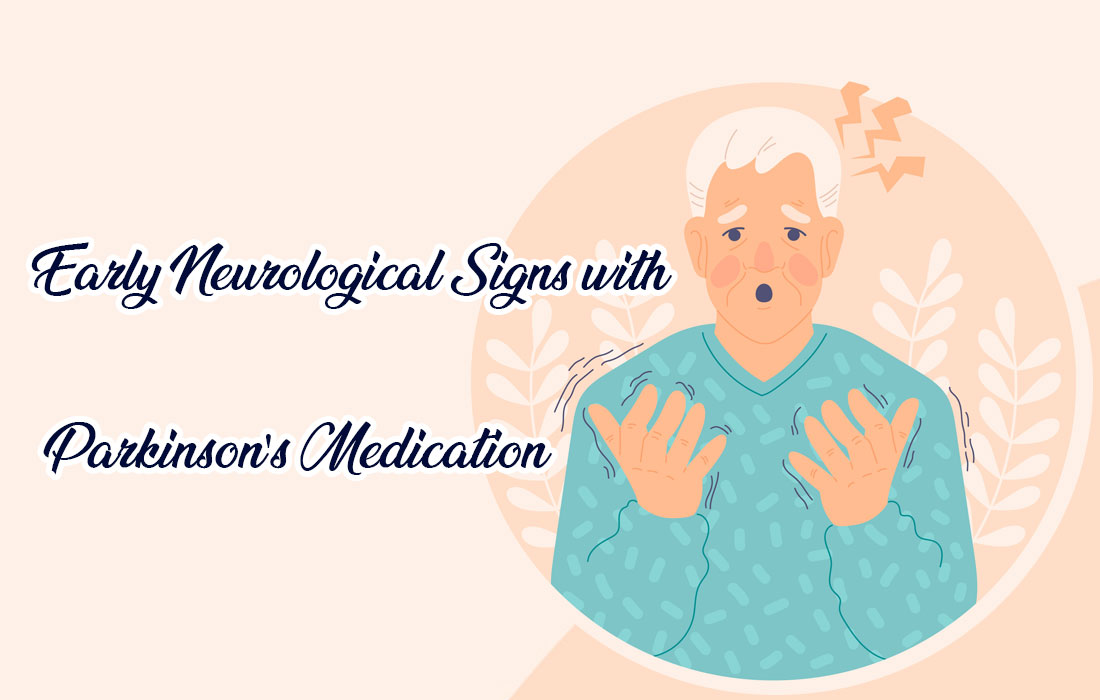Living with Parkinson’s can be challenging, but individuals can lead fulfilling lives with the right medications and proper management. While it’s most commonly associated with older adults, it can strike at any age. It’s essential to be aware of early warning signs that may indicate changes in your neurological health. In this blog, we’ll discuss some common early warning signs along with Parkinson’s medication, why they occur, and what you can do to address them.
Early Nerological Signs of Parkinson
1. Freezing of Gait
Freezing of gait is a phenomenon where a person with Parkinson’s disease suddenly finds it challenging to initiate or continue walking as if their feet are glued to the ground. It can be a distressing and potentially dangerous symptom. Freezing of gait can occur due to fluctuations in dopamine levels in the brain.
2. Cognitive Changes
Cognitive changes, including memory problems and confusion, can occur as Parkinson’s progresses. In some cases, lifestyle adjustments may be needed to manage this symptom.
3. Tremors
One of the most recognizable early signs of Parkinson’s disease is tremors. These involuntary shaking movements typically occur in the hands, fingers, legs, and chin. These tremors often appear when the affected person rests and may subside during voluntary activities. If you notice consistent handshaking, it’s a sign that should not be ignored, and it is necessary to take appropriate medication to stop hand tremors.
4. Bradykinesia
Bradykinesia is a term that describes the slowing down of movements. People with this condition may have difficulty performing everyday tasks that require fine motor skills, such as buttoning shirts, tying shoelaces, or writing neatly. You might notice someone taking longer to complete simple actions or needing help to initiate movements.
5. Muscle Rigidity
This stiffness can make everyday activities like getting out of bed or turning in bed more challenging. Muscle rigidity may also manifest as discomfort or pain in various body parts. If you or someone you know experiences persistent muscle stiffness, it’s essential to take Parkinson rigidity medication to improve your overall health.
6. Changes in Handwriting
Parkinson’s disease can affect handwriting, making it smaller, cramped, and more difficult to read. This change is often referred to as micrographia.
7. Changes in Sense of Taste
Some individuals with Parkinson’s disease report changes in their sense of taste, such as a diminished ability to detect certain flavours or a metallic taste in their mouth. These taste changes can impact appetite and dietary habits.
8. Reduced Sense of Smell
A reduced sense of smell, called hyposmia, can sometimes be an early indicator of Parkinson’s disease. People may have difficulty detecting common odours or notice changes in their ability to enjoy food.
9. Mood Changes
Depression and anxiety often manifest as prevalent emotional symptoms in individuals with Parkinson’s disease. While these mood changes can occur at any stage of the disease, they can sometimes precede the motor symptom.
Conclusion
Identifying the initial indicators of Parkinson’s disease is crucial for prompt diagnosis and intervention. Parkinson’s disease is a progressive condition, but with the right Parkinson’s medication, lifestyle adjustments, and support, individuals can continue to lead fulfilling lives. By taking a vigilant and proactive approach to their health, those with Parkinson’s can optimize their outcomes and sustain a better quality of life.

